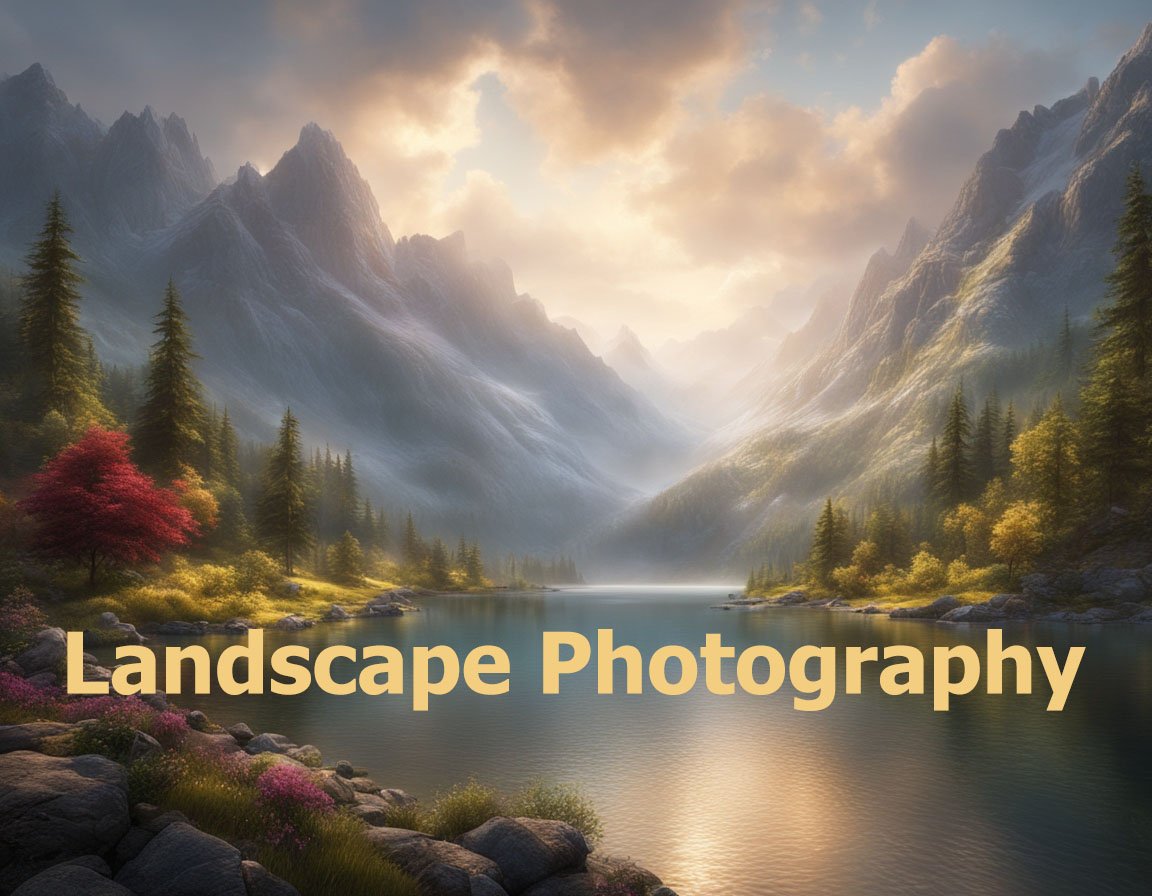Understanding the Fundamentals of Landscape Composition
When it comes to landscape photography, many people believe that the beauty of a scene alone will make a photograph compelling. However, the secret behind many breathtaking landscape shots is a solid understanding of composition. Let’s dive into the essential elements that form the backbone of great landscape photography.
The Role of the Rule of Thirds
One of the most well-known principles in photography, the rule of thirds, is a simple yet effective tool in composing a landscape shot. Imagine your image divided into nine equal parts by two horizontal and two vertical lines. Positioning important elements along these lines or at their intersections can create a more balanced and engaging photograph. While it’s not a strict rule, using this guideline can enhance the natural aesthetic appeal of your shots.
The Golden Ratio: A Natural Balance
For those seeking a more mathematically precise guideline, the golden ratio offers a beautiful alternative. This principle suggests using a logarithmic spiral as a guide to placing key elements in your frame. This spiral can be found naturally in nature, and by mirroring it in your compositions, you can create a harmonious and balanced image that naturally draws the viewer’s eye through the photograph.
Mastering Perspective and Depth
Achieving a sense of depth in your landscape photography breathes life into images, making them appear more three-dimensional and inviting. Let’s explore techniques to enhance perspective in your compositions.
Creating Foreground Interest
Including an interesting foreground element, such as a rock, a flower, or a leading line like a winding path, can anchor the viewer’s eye and create a sense of depth. The foreground leads the eye into the photograph, guiding viewers and inviting them to explore all the layers of the scene. This technique transforms a flat image into a more immersive experience.
Using Leading Lines Effectively
Leading lines direct the viewer’s attention through the landscape, usually towards the main subject or vanishing point. These lines can be anything from a fence, a river, or a shadow, and they naturally guide the viewer’s eye along their path. When composing your shot, look for opportunities to incorporate leading lines that will add dynamism and flow to your photograph.
Playing with Scale and Distance
Contrast in scale within your composition can enhance depth and interest. Including a person or another recognizable object in the frame can provide a sense of scale that emphasizes the grandeur of a landscape. This technique not only makes the landscape appear vast but also helps establish a narrative or evoke emotion within the viewer.
The Power of Light and Timing
The quality of light can drastically change the mood and impact of a landscape photograph. Understanding how to harness natural light and timing can elevate your compositions to the next level.
Golden and Blue Hours
Professional photographers often speak of the ‘golden hour’ and ‘blue hour’ for a good reason. The golden hour occurs shortly after sunrise and before sunset, where the light is softer and warmer, creating beautiful shadows and highlights. Conversely, the blue hour, which is the time just before sunrise and after sunset, offers a cooler, more ethereal quality of light. Both times of day provide unique lighting conditions that can transform a landscape scene into something magical.
Utilizing Shadows for Drama
Shadows are not just dark spaces in your photograph; they are storytelling elements that can add texture, dimension, and mood. By deliberately including or accentuating shadows within your composition, you can create drama and contrast that enriches the visual narrative of the image.
Capturing Silhouettes
Silhouettes can simplify a complex scene, focusing attention on the outline of recognizable shapes against a vibrant sky or backdrop. This technique is especially effective during sunset or sunrise when the contrast between the subject and the sky is at its highest. Position your subject against the brightest part of the frame, expose for the sky, and enjoy the results of this striking compositional choice.
Refining Techniques Through Practice
No great composition is achieved without practice. Embracing failure and learning from different scenarios are vital components to mastering landscape photography.
Experimenting with Different Compositions
Do not be afraid to try unconventional compositions. Sometimes breaking the rules can lead to unexpectedly stunning results. Move around your scene, change your vantage point, and see how varying perspectives alter the composition and mood of your photograph.
Reviewing and Reflecting on Your Work
After shooting, take the time to review your images critically. Consider what worked, what didn’t, and why. Reflect on your use of composition, light, and perspective. This practice will help develop an intuitive sense of what makes an engaging photograph, aiding you in your future shoots.
Seeking Feedback from Others
Don’t underestimate the value of feedback from fellow photographers or mentors. Sometimes an outside perspective can provide insight into compositional aspects you may have overlooked. Constructive criticism is invaluable in refining your techniques and discovering new approaches.
Embracing Technological Tools
In today’s digital world, photographers have access to numerous tools and resources that can elevate their compositional skills to new heights.
Leveraging Post-Processing Software
Composition can be further enhanced during the editing process. Cropping can help refine a composition, enhancing balance, and removing distractions. Additionally, adjusting aspects like contrast, saturation, and brightness can direct focus and highlight key components of the composition, elevating the overall impact of the photograph.
Utilizing Apps for Planning
Several apps are available that can aid in planning a shoot. From tracking the movement of the sun and moon to predicting the weather, these technological tools can lead you to the perfect time and place for capturing stunning landscapes with well-planned compositions.
Using Drones for Unique Perspectives
Drones offer an opportunity to capture landscapes from angles and perspectives that would otherwise be impossible. When used thoughtfully, aerial photography can dramatically expand your compositional possibilities, introducing new dimensions and creative potential to your work.


